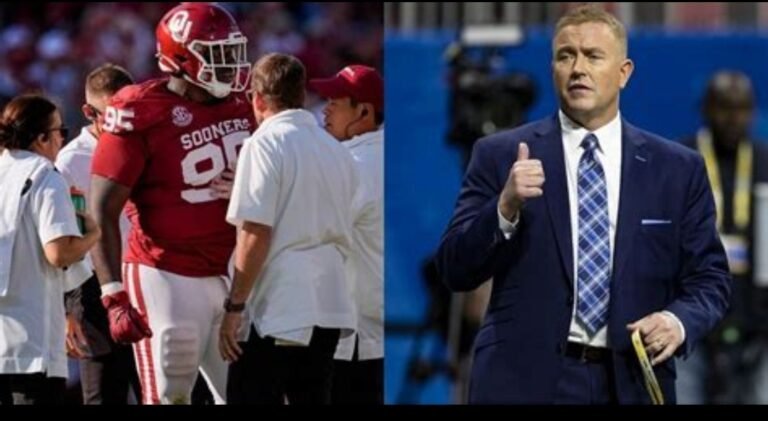In a recent high-stakes matchup between the Tennessee Volunteers and the Oklahoma Sooners, a controversial incident involving alleged fake injuries has ignited discussions across the college football community.
ESPN analyst Kirk Herbstreit did not mince words during the broadcast, condemning what he perceived as deliberate attempts by Oklahoma to disrupt Tennessee’s offensive momentum.
The controversy unfolded early in the first quarter after Tennessee’s quarterback, Nico Iamaleava, connected with wide receiver Bru McCoy for a substantial 40-yard gain. As the Volunteers hurried to capitalize on the successful play, Oklahoma defensive tackle Da’Jon Terry suddenly collapsed, clutching his leg. This unexpected pause forced officials to halt the game, allowing the Sooners’ defense to regroup. Herbstreit, observing the sequence, noted that Terry appeared to glance toward the sideline before going down, suggesting a possible orchestrated tactic. He voiced his frustration on air, stating, “They look over after a big play, he looks over and just goes down.”
Herbstreit further elaborated on his stance, labeling the act as “unethical as hell” and “pathetic.” He emphasized that while such actions might not explicitly violate current rules, they undermine the spirit of fair competition. “It’s not necessarily against the rules, but it’s unethical as hell,” Herbstreit remarked, highlighting the need for integrity in the game.
The incident has reignited debates about the prevalence of simulated injuries in college football, particularly as a strategy to counter high-tempo offenses. Tennessee’s fast-paced playstyle often leaves defenses struggling to adjust, and opponents may resort to questionable methods to slow the game’s rhythm. Herbstreit has been a vocal critic of this trend, advocating for stricter regulations to deter teams from employing such tactics.
Fans and analysts have taken to social media and sports forums to express their views on the matter. Many support Herbstreit’s perspective, arguing that feigned injuries compromise the game’s integrity and disadvantage teams that rely on momentum. Others contend that without concrete evidence, it’s challenging to ascertain a player’s true condition, and caution against hastily assigning blame.
This incident is not isolated. Throughout the season, there have been multiple instances where players’ sudden injuries coincidentally aligned with pivotal moments, prompting suspicions. The lack of definitive guidelines addressing this issue has led to calls for the NCAA to implement measures that discourage potential exploitation of injury timeouts.
In response to the growing concern, some propose that players who require injury stoppages be mandated to sit out for an extended series of plays, thereby reducing the incentive to feign ailments. Others suggest that teams be charged timeouts if a pattern of suspicious injuries emerges, placing a strategic cost on potential misconduct.
As the season progresses, the spotlight remains on how governing bodies and coaching staffs will address this contentious issue. The balance between player safety and maintaining the game’s competitive flow is delicate. Ensuring that teams do not exploit medical timeouts for strategic gain is paramount to preserving the sport’s integrity.
In the aftermath of the Tennessee-Oklahoma game, the discourse sparked by Herbstreit’s candid commentary serves as a catalyst for potential reforms. Whether through rule changes or heightened scrutiny, the college football community appears poised to tackle the challenge of simulated injuries head-on, striving to uphold the principles of fair play and sportsmanship.



